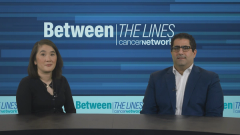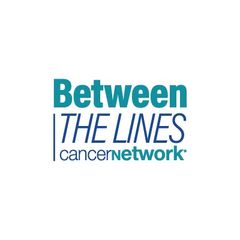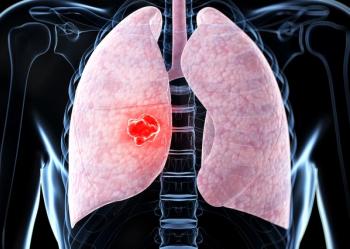
Real-World Analysis of Amivantamab vs Other Therapies in Exon 20–Mutated NSCLC: Methods
A comprehensive overview of the methods utilized in a real-world analysis of amivantamab vs other therapies in patients with EGFR exon 20–mutated NSCLC.
Episodes in this series

Transcript:
Joshua K. Sabari, MD: This question led us to this study of amivantamab vs alternative real-world anti-cancer therapies in patients with advanced non–small cell lung cancer with EGFR exon 20 insertion mutations. What we did was we took patients from the CHRYSALIS study, cohort D, 114 patients, and we looked in large databases. In the United States, we used things like Flatiron Health, ConcertAI databases. We looked across Europe, including Germany and other countries. So, a large data set. We were able to match them to patients who had received the drug on CHRYSALIS.
What we were able to do is identify a cohort of patients who had exon 20 who were previously treated with chemotherapy, so those who were eligible per the initial study, and we were able to match this patient population. What was interesting to see is we looked at all the different treatments that those patients received, and we compared them to how patients did in the actual trial with amivantamab.
Before jumping into the study, what are some other regimens you are seeing? I know you’re not using them, but maybe you are seeing in your clinical practice being utilized in the second-line setting for patients with an EGFR exon 20 insertion mutation?
Helena A. Yu, MD: I would say that probably the most common thing after platinum-based chemotherapy is standard second-line chemotherapy. If people haven’t used immunotherapy, that’s something I’ve commonly seen as well. Then a smattering of other EGFR inhibitors, questionable efficacy, but afatinib, osimertinib being used as well. What about you?
Joshua K. Sabari, MD: I see a lot of osimertinib utilized in the community at 80 mg, which as we mentioned, has very little rationale. At 160 mg, there are some small subsets, but they still look inferior to the data we have for amivantamab. I see a lot of chemotherapy and immunotherapy, unfortunately, utilized in later lines. Sometimes we see single-agent docetaxel, or docetaxel and ramucirumab. So that’s exactly what we looked at in this study. We compared amivantamab to other TKIs [tyrosine kinase inhibitors], immunotherapy, including immunotherapy and chemotherapy, non-platinum-based chemotherapy, chemotherapy plus a VEGF inhibitor, and then we had a bucket of other patients who had received other experimental type therapeutics.
I want to jump into the methods a bit of this study. First off, the patients who enrolled in the CHRYSALIS trial, and that’s really our control arm, we’re going to compare to this arm. Those are patients who had all received prior chemotherapy. These are patients in the second-line setting, and 114 patients were enrolled. We talked about the response rate, the durability of response, a 40% response rate, median progression-free survival of 8.3 months, leading to the FDA approval.
Now in the experimental set, we looked at patients who similarly matched this profile. The way we did that is we used large data sets in the United States from Flatiron, ConcertAI, and COTA. We looked at data sets from England and Germany. One interesting thing to note is this does not include an Asian patient population. What we were able to do was using propensity scores, we were able to mimic the effect of randomization by creating this balance between the amivantamab cohort from CHRYSALIS cohort D to the comparator treatment arms. Are there any issues you have with that?
Helena A. Yu, MD: No. I think there are always going to be the inherent questions about real-world data, but I think using the propensity score methods is doing as much as you can statistic-wise to balance and make this an apples-to-apples comparison.
Joshua K. Sabari, MD: It’sclearly not a randomized study, but I think it’s the best we can do in the real world. Kudos to the authors for doing this in this setting. We looked at all variables between the CHRYSALIS cohort and the real-world data sources. We included adjustment for prior lines of therapy, treatment, age, gender, and the presence of brain metastasis. You mentioned earlier that brain metastasis is common in this patient population. How common is that, and how much does that affect your treatment strategies?
Helena A. Yu, MD: Absolutely. In our retrospective review of EGFR exon 20, it’s similar to the sensitizing EGFR mutations at about 50%. I think cumulatively in the disease course, that’s the frequency. So making sure drugs are effective in the CNS [central nervous system] is critical.
Joshua K. Sabari, MD: It’s important then to balance these factors. Patients with brain metastasis on average would not do as well as patients without brain metastasis. We used an inverse probability weighting, which is the average treatment effect among the treated population. We used these methods to generate data for comparator arms of interest in this population. So as best as we could within statistical methods, we were able to balance these arms.
We looked at binary end points that were analyzed looking at different hazard ratios for overall survival, progression-free survival, as well as the time to next treatment, and overall response rates. Now, if you were developing a study, what are some of the end points you would utilize to understand these 2 groups? Is this aligned with what you would think?
Helena A. Yu, MD: Absolutely. I think for randomized prospective studies or even single-arm prospective studies, most commonly progression-free survival or overall response rates are typically the primary end points. But all of these I think are clinically meaningful to patients, and in particular time to next treatment, which we don’t use commonly, but in the real world that’s key because sometimes if patients are doing well, there’s a bit of treatment beyond progression. These would be exactly the variables I’d want to look at.
Joshua K. Sabari, MD: You bring up a great point. In a randomized study, you have set time points for scans and check-ins, and data collection. In a real-world analysis, you might not have that balanced across the groups, so it’s important to use time to next treatment as an end point that may help mimic some of the data that may be lost.
Transcript edited for clarity.
Newsletter
Stay up to date on recent advances in the multidisciplinary approach to cancer.























































































